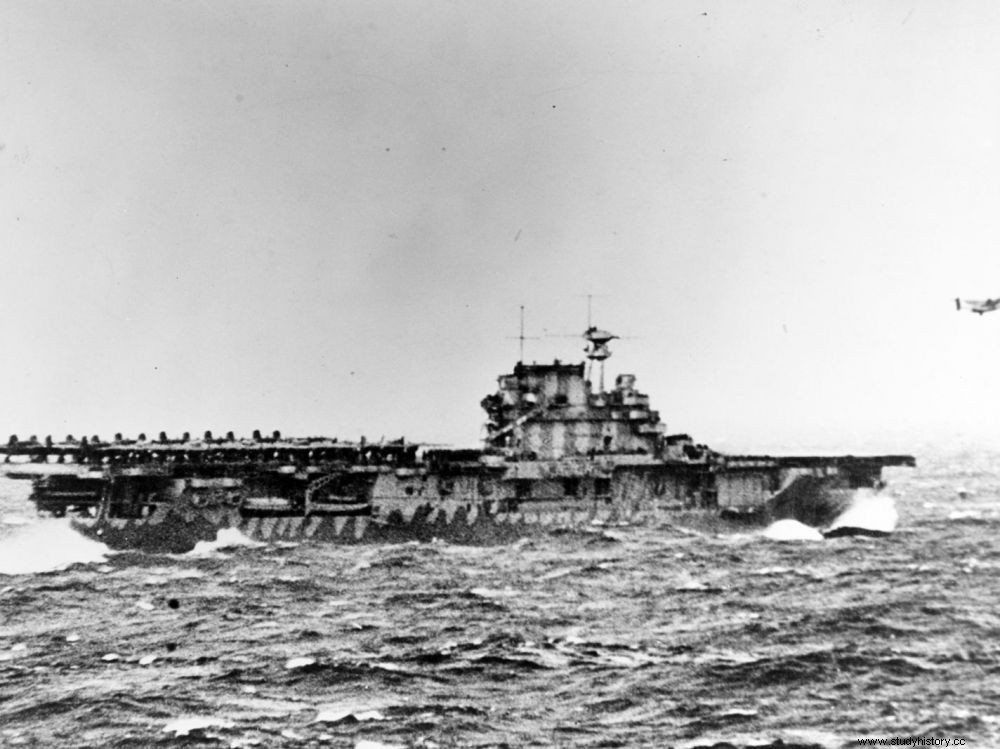This aircraft carrier that took part in major battles was sunk in 1942. It was the Microsoft co-founder's ship that found its wreckage.

Photograph of the USS HOrnet in April 1942, during an air raid against Japan.
The USS Hornet (CV-8) aircraft carrier did not cruise the seas for long. Leaving the shipyards in 1941, she was sunk a little over a year later during the Battle of the Santa Cruz Islands in the Pacific. Its wreckage has just been found by the research vessel of Paul Allen, the co-founder of Microsoft who died in 2018.
An emblem ship
The USS Hornet began its military operations with the "Doolitlle Raid", the first air attack on Japanese soil in April 1942. From its deck took off 16 B25 bombers which were able to reach their target. These planes then took their way to China where they were to land. But most have been shot before. The Hornet, meanwhile, then distinguished itself during the Battle of Midway before being sunk on October 27, 1942, during a coordinated attack by Japanese forces of which it was the main target, 400 km from the archipelago. principal of the Solomon Islands. Its wreck was discovered and identified in January 2019 by the crew of the R/V Petrel, Paul Allen's ship which has already helped to locate several other wrecks.
The crew of the R/V Petrel used data from the US National Archives, including logbooks and reports from nine other ships engaged in the Battle of the Santa Cruz Islands. This information made it possible to define a central point for establishing the research grid. They had the favor of fate since the Hornet was spotted, on its first dive, by the sonar of the ship's autonomous submarine, at a depth of 5400 meters. Another remote-controlled vehicle then went to confirm the identity of the aircraft carrier by taking multiple images with its HD camera.
